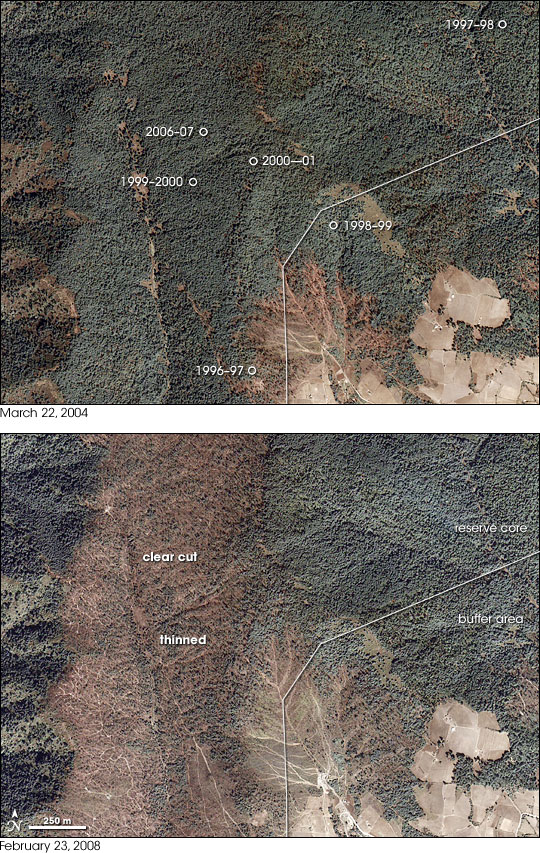|
Habitat Loss in Mexico
This
mountainous region of the
Michoacán state of Mexico, covered with oyamel fir trees provides a perfect
wintering site for the eastern US Monarch butterflies. The butterflies
coat the fir trees huddling together for warmth and protection.
 However, the Monarch's winter home is under attack. However, the Monarch's winter home is under attack.
What's Happening?
Logging of old-growth fir trees is wrecking havoc on the
region. During the night, illegal crews of loggers invade the Michoacán
forest and strip the mountain sides leading to accelerated rates of
erosion and loss of fresh water in the regions. Normally the old growth
tree roots provide a method to refill under laying aquifers.
Why?
Logging has been the main source of income for many generations.
"Chopping down trees is a lucrative source of cash for impoverished
indigenous communities in rural central Mexico” (Reuters)
Many people in rural areas do not have the opportunity to work in
the city, so they turn towards their natural resources to provide an
income. “The forest people who live among the butterflies eke out a
living from what they are able to harvest. They need firewood for cooking
and heating as well as building houses and fences.”
Illegal logging has become such a big market that more than half of all
timber cut in Mexico is from illegal cutting. In 1986, the Mexican
government set aside a reserve for the monarchs called the Monarch
Biosphere Reserve. Unfortunately, more than half of the
reserve has been destroyed from illegal farming. Below are
images
from Ikonos satellite showing the amount of deforestation taking place in
the Monarch Butterfly Biosphere Reserve.

What's Being
Done?
Recently, the Mexican government also formed a team of 17 park rangers,
armed with assault rifles and body armor, to protect the colonies of
monarch butterflies. Green peace activists have stepped in to help
local actions as well as researchers from the University of Kansas.
The KU researcher have gone to the Michoacán area to study the area for a
better understanding of the butterfly migration.
Locals are taking action against the loggers – replanting colonies of the
oymal fir tree. One man in particular – Jose Luis Alvarez Alcala has made
a group to protect the region (LCHPP) La
Cruz Habitat Protection Project.
Also, the
Mexican government responded by creating the Monarch
Butterfly Special Biosphere Reserve in 1986 with 16,110 hectares of key
habitat protected and the Monarch Butterfly Biosphere Reserve in 2001 with
56,259 hectares of core and buffer zones.
Back to Top ▲
|

